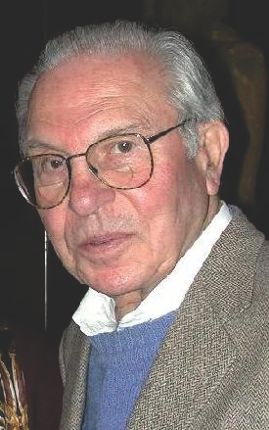Alfred Kenneth Mann
DOI: 10.1063/PT.3.1986
Alfred Kenneth Mann passed away at age 92 on 13 January 2013 in Gwynedd, Pennsylvania. A professor of physics emeritus at the University of Pennsylvania, Mann was best known for his contributions to experimental neutrino physics. He also worked toward establishing an underground laboratory for basic science in the US.
Mann was born in New York City on 4 September 1920. He received his undergraduate degree in philosophy from the University of Virginia in 1942. Staying on at the university, he worked with Jesse Beams on servomechanisms for ultracentrifuge uranium isotope separation, research he learned was part of the Manhattan Project when news of the bomb became public. He first heard about the atomic bomb from a newsboy hawking papers. He told his family that the news left him stunned by the implications for the future.
After the ultracentrifuge project was terminated in January 1944, Mann applied his knowledge of servomechanisms to rocket guidance until the end of World War II. He then returned to the University of Virginia, where he completed his MS in 1946 and his PhD in physics in 1947. He did his dissertation, “The thermal diffusion coefficient of nitrogen,” under Beams’s supervision. On completion of his PhD, Mann became an instructor in the physics department at Columbia University. His research during that period, with Polykarp Kusch, was on hyperfine structure and the electron gyromagnetic ratio. He also formed a lifelong friendship with I. I. Rabi.
In 1949 Mann joined the Penn faculty; he spent the remainder of his career at the university. From 1949 until 1960, he primarily studied photonuclear reactions using the Penn 25-MeV betatron. He also contributed to the construction of the Princeton–Pennsylvania Accelerator (PPA), a 3-GeV proton synchrotron that began operation in 1963. His interest in weak interactions, developed during that period, would stay with him the rest of his professional career. He used the PPA to study the decays of charged and neutral K mesons and served as its associate director in 1966 and 1967.
During the 1960s, neutrino physics was in its infancy. Mann saw an opportunity for large gains in the study of neutrino interactions and the possibility of discovering new phenomena using a neutrino beam at the soon-to-be-constructed National Accelerator Laboratory, now Fermilab. He recruited Carlo Rubbia and David Cline as collaborators and produced a proposal that became experiment E-1a, the first to be approved at the new laboratory. Interestingly, his group’s primary competition in neutrino physics at Fermilab was an experiment co-led by Mann’s former student Frank Sciulli.
Among the many scientific results from his work at Fermilab, the most notable were the confirmation of the existence of weak neutral currents and the discovery of di-muons, which provided strong evidence for the existence of charmed particles. In the 1980s at the Brookhaven Alternating Gradient Synchrotron, Mann participated in the construction of a much larger fine-grained detector that measured neutrino and antineutrino elastic scattering from both protons and electrons. Those measurements were important contributions to defining what is now known as the standard model of particle physics.
Mann’s interest in weak interactions also led to his searching for proton decay. In 1984 Masatoshi Koshiba of the University of Tokyo invited him to form a group of US physicists to help upgrade the existing Kamiokande detector so it could better distinguish background events from signal candidates. The resulting collaboration proved immensely successful. Not only did it improve the limits on nucleon decay, it also observed neutrinos from supernova 1987a, made the first direct measurement of neutrinos emitted by the Sun, and observed the anomaly in the muon-to-electron ratio in atmospheric neutrino interactions, an anomaly that was later shown by Super-Kamiokande to be due to neutrino oscillations.
In 1982, in collaboration with Robert Sharp and others at Los Alamos National Laboratory, Mann proposed the creation of an underground science laboratory. Although that proposal received no funding, Mann, in his eighties, participated in establishing a similar underground laboratory at the Homestake Mine site in South Dakota. That work led to what is now the Sanford Underground Research Facility.
Mann enjoyed his family, music, history, and a good debate. In addition to his many accomplishments, he will be especially remembered for his great vision, dedication to science—he was attending seminars and colloquia in his nineties—and encouragement of young scientists, especially those from other countries.

Alfred Kenneth Mann

More about the Authors
Eugene W. Beier. University of Pennsylvania, Philadelphia.
Hugh H. Williams. University of Pennsylvania, Philadelphia.
